Call us now
3.2 inch 4 wire resistive touch screen
Price 1.0 USD ($)/ Piece
3.2 inch 4 wire resistive touch screen Specification
- Mounting Type
- Panel mount
- Supply Voltage
- DC 5V (typical)
- Processing
- ITO sputtering and lamination
- IP Rating
- IP54 (front surface only)
- Process
- Photolithography and assembly
- Technique
- Resistive touch technology
- Usage
- Touch input for displays
- Weight
- Approx. 15g
- Color
- Transparent
- Thickness
- 1.1 mm (typical)
- Standard
- Compliant with RoHS standards
- Equipment Type
- Touch Panel
- Size
- 3.2 inch
- Frequency
- DC operation
- Dimension (L*W*H)
- 76.9mm x 63.9mm x 1.1mm (approx.)
- Input Voltage
- DC 5V (typical)
- Temperature
- -10C to +60C (operating)
- Product Type
- 4 Wire Resistive Touch Screen
- Tolerance
- 0.2mm
- Design
- 4-wire, analog
- Installation Guideline
- Peel and stick adhesive or mounting via bezel/frame
- Surface Treatment
- Anti-glare/Anti-fingerprint (optional)
- Humidity
- 85% RH (non-condensing)
- Output Voltage
- Analog signal
- Service Period
- Up to 1 million touches
- Finish
- Matte or Glossy (varies by model)
- Application
- Embedded systems, portable devices, handheld terminals, automation interfaces
- Material
- Glass, ITO Film
3.2 inch 4 wire resistive touch screen Trade Information
- Minimum Order Quantity
- 10 Pieces
- FOB Port
- SHENZHEN
- Payment Terms
- Paypal, Letter of Credit at Sight (Sight L/C), Telegraphic Transfer (T/T)
- Supply Ability
- 10000 Pieces Per Day
- Delivery Time
- 25 Days
- Sample Available
- No
- Sample Policy
- Contact us for information regarding our sample policy
- Packaging Details
- PE foam tray packaging Carton Wooden
- Main Export Market(s)
- Asia, Australia, Central America, North America, South America, Eastern Europe, Western Europe, Middle East
- Main Domestic Market
- All India
- Certifications
- CE ROHS
About 3.2 inch 4 wire resistive touch screen
3.2 inch4 wire resistive touch panel, accept customization
Intercom systems: Video door phone, video peephole viewer, phone etc.
Safety and Security: Monitors, touch PCs
Consumer Electrics: Advertising players, TVs, ATMs etc.
Telecommunication Devices: Telephone, Interphone, watch, radio, etc.
Home Appliances: Washing Machine, Refrigerator, Home Integrator,digital photo frame
Industrial Control:HomoeostasisNumerically-controlled machine tool
Instrument and Apparatus: Tester, Medical instruments
Vehicle-mounted Digital: MP3, MP4 and vehicle-mounted air conditioner
Mining: Mines lamp charger, gas tester
Marine: Salinity tester
Parameters:
| Size available | 1.4,1.8,2.0,2.4,2.8,3,3.2,3.5,3.8,4.3,4.5,4.8,5,5.6,6.5,7,7.5,8,8.4,10,10.1, 10.4,12.1,14,15,15.4,15.6,17,18.5,19,21.5,23.6 INCH | ||
| Performance | |||
| Resoslution | 4096*4096 | ||
| Linearity Error | <2.5% | ||
| Response Speed | <10ms | ||
| Mechanical | |||
| Input Method | Finger or stylus | ||
| Life Span | More than 10 million touches | ||
| Pressure | 10-100g | ||
| Surface Hardness | 3H | ||
| Optical | |||
| Light Transmission | >78% | ||
| Structure | |||
| 2 layers | Film+ITO glass | ||
| 3 layers | PET+Film+ITO glass(cusomize) | ||
| 4 layers | PET+Film+ITO glass+PC/PMMA/GLASS (customize) | ||
| Environmental | |||
| Operating Temperature | -10 50C | ||
| Storage Temperature | -20 60C | ||
| Operating Humidity | 0%90% | ||
| Storage Humidity | 0% to 95% | ||
| Electrical | |||
| Voltage | Typical 3-7V | ||
| Current | 5mA25mA | ||
| Interface | Full Duplex USB 2.0 (Full Speed) Plug and play compatible | ||
| Serial RS-232. Baud Rate: 9600, 8 Data Bits, 1 Stop Bit, No Parity | |||
| Isolation Resistance | >20M | ||
| Resistance | 300< X Axis <900, 200< Y Axis <800 (Varies with different size) | ||
| Agency Approvals | CE, Rohs | ||
| Operation System | Linux/ Dos / Windows /Mac/QNX | ||
| Standard controller | EETI 5 wire/4 wire USB/RS232 controller kits(include board and calbes) | ||
| Special requirements | High-Transmittance Glass,light touch, Strengthened Glass,optional | ||
Available4 wire resistive touch screen models:( if havent found suitable one, please contact with us.)
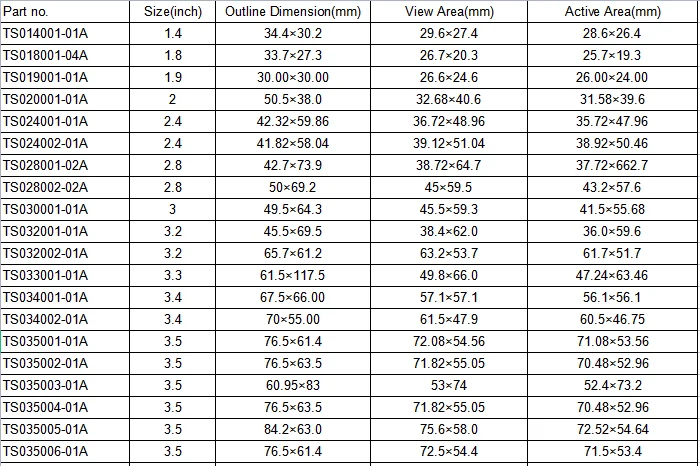
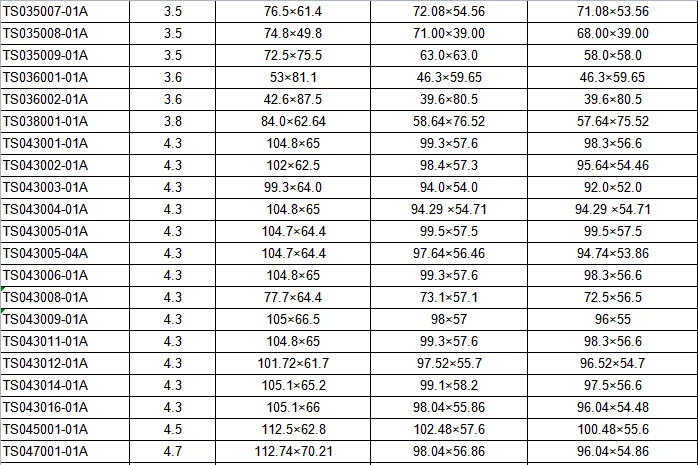
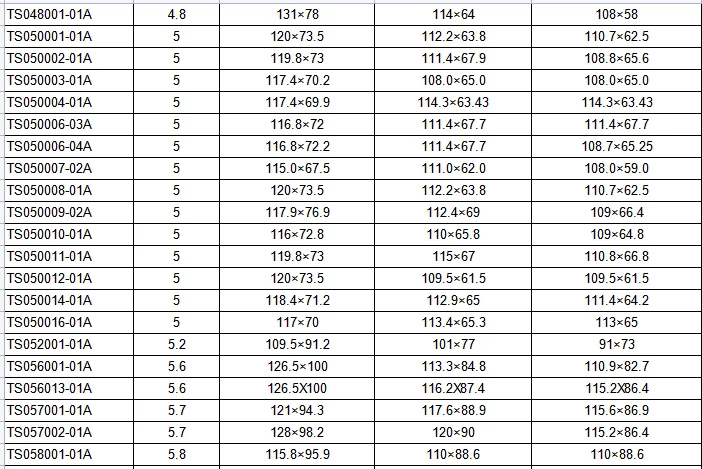
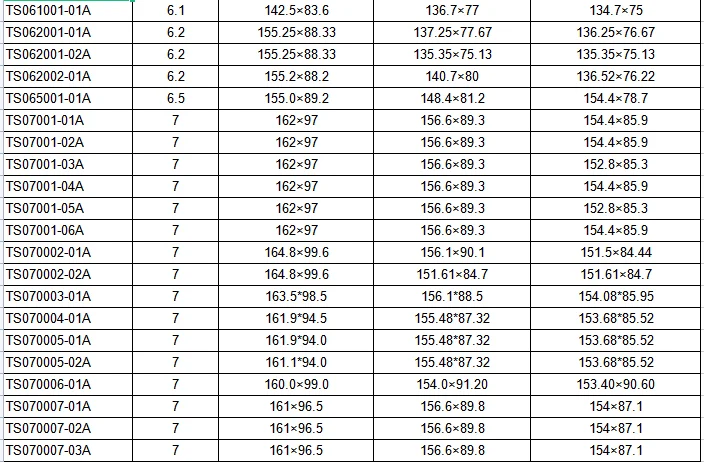
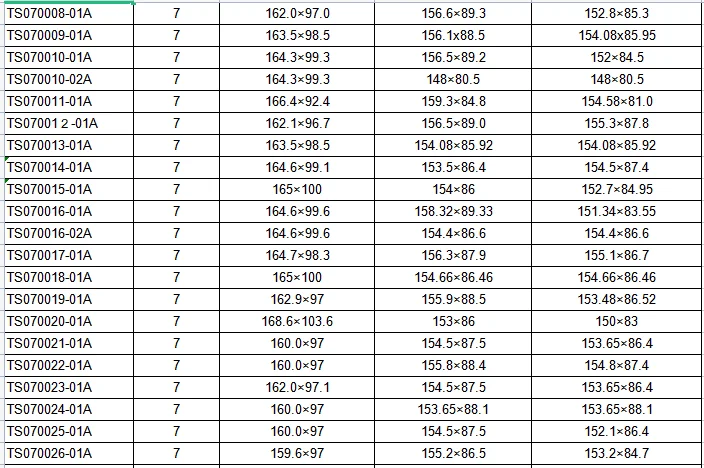
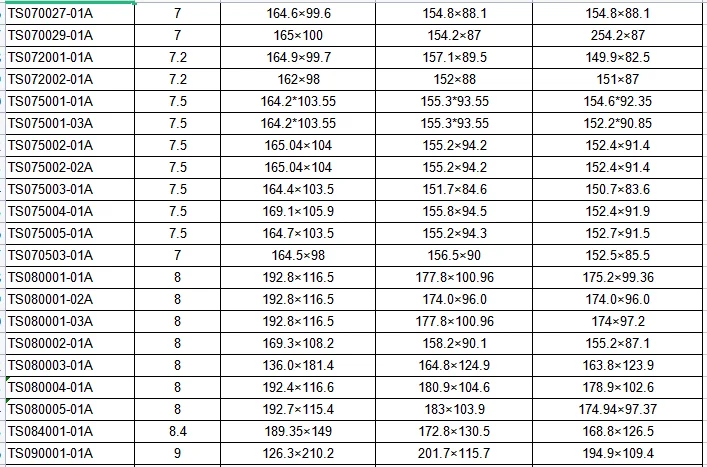
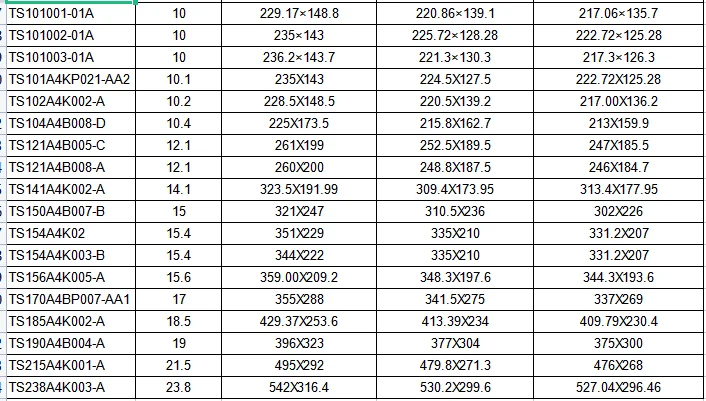
Sturcture

ITO FILM
Classification by Surface Treatment
a. Glossy Anti-Scratch Surface Low haze, providing better visual clarity. More challenging manufacturing process. Lower durability against scratches.
b. Glossy Anti-Newton Ring Surface Includes an anti-Newton ring layer. Reduces manufacturing difficulty.
c. Matte Anti-Glare Surface Features an anti-glare layer. Optimized for outdoor use with improved visibility.
Classification by Sheet Resistance
a. Low Resistance Primarily used indigital resistive touchscreens. Lower loop resistance, resulting inhigher sensitivity.
b. High Resistance Mainly used inanalog resistive touchscreens. Lighter etching traces, offeringbetter visual appearance.
Classification by ITO Film Substrate
a. Single-Layer Film Uses asingle-layer PET substrate,lower cost.
b. Double-Layer Film Uses adual-layer composite PET substrate,higher cost. Softer and more durable, used inhigh-end products.
ITO GLASS
Classification by Strength
a. Chemically Strengthened Glass Treated with chemical tempering to increase surface compressive stress. Enhances overall strength but at a higher cost.
b. Standard Glass Conventional glass without special strengthening treatment
Classification by Transmittance
a. High-Transmittance Glass (AR-Coated) Features anti-reflective (AR) coating, improving light transmission by 3% over standard glass.
b. Standard Glass No additional optical enhancement.
Classification by Thickness
Standard Thicknesses:0.7mm / 1.1mm / 1.8mm
Special Thicknesses:0.55mm / 2.8mm
Classification by Resistance
a. High Resistance (400) Used inanalog resistive touchscreens.
b. Low Resistance Primarily fordigital resistive touchscreens.
FPC
a. Core Materials of FPC: Base Material, Copper Foil, Stiffener, Coverlay
b. Common FPC Structures for Touchscreens
Touchscreens typically use either: Single-layer FPC/Double-layer FPC
c. FPC Material Specifications Base Material
Adhesive-based: Contains adhesive layer between copper and PI (polyimide).
Adhesive-less: Eliminates adhesive layer, consisting only of copper foil and PI (Thinner profile, Superior dimensional stability, Enhanced heat resistance, flex endurance, and chemical resistance, Now widely adopted in industry)
Copper Foil
Rolled Copper:Better flex endurance;Not suitable for ultra-thin boards or fine circuitry;Commonly used in resistive touch screens
Electrodeposited Copper: Preferred for capacitive touch screens
Stiffener Materials:
| Type | Characteristics | Application |
| PI | Lowcost,pronetodeformation | Resistivetouchscreens |
| FR4 | Balancedcost/performance | Mid-rangeapplications |
| Steel | Highperformance,expensive | Capacitivetouchscreens |
PET COVER LENS
Thickness
| Thickness | Characteristics | Application |
| 0.125mm | Lightertouchforce,poorerflatness | Nicheapplicationsrequiringsensitivetouch |
| 0.188mm | Balancedtouchforceandflatness | StandardforRTP(ResistiveTouchPanels) |
| 0.25mm | Highertouchforce,excellentflatness | Applicationsrequiringdurability |
Surface treatment
| Type | Characteristics | KeyParameters | Usage |
| GlossyAnti-Scratch | Scratch-resistantcoating | Hightransmittance Lowhaze | Mostcommon(indoordevices) |
| MatteAnti-Glare(AG) | Diffusesurfacetreatment | Reducedreflectivity Higherhaze | Outdoor/sunlight-readableproducts |
| GlossyAnti-NewtonRing | Multi-layeropticalconstruction | EliminatesNewtonRing | Limiteduse(3-layer"framedpanels) |
Carrier Plate
Material
| Material | Characteristics |
| PC(Polycarbonate) | Impact-resistant,butlowersurfacehardness(max2H),cost-effective |
| PMMA(Acrylic) | Impact-resistant,highersurfacehardness(upto3H),pronetowarping/shrinkage |
| PC/PMMAComposite | CombinesbenefitsofPC&PMMA,buthighercost |
| Glass | Highsurfacehardness(6H),minimalwarping/shrinkage,moderatecost,butlessimpact-resistantthanplastics |
Thickness
Glass:0.55mm / 0.7mm / 1.1mm / 1.8mm
PC/PMMA/Composite:0.5mm / 0.65mm / 0.8mm / 1.0mm / 1.5mm
How to assemble the resistive touch screen to the housing?
To prevent false triggers, the housing must not directly contact the active touch area. Maintain an air gap of 0.20mm0.50mm between the housing and touchscreen surface. Recommendations for Customers: Step Design Add a peripheral step on the housing(Foam Tape) Width:Should not exceed TP silver trace boundaries Height:0.20.5mm
When installing a resistive touch screen, it is recommended not to position the FPC downward. In outdoor environments with significant temperature differences, water vapor may condense on the touch screen surface. Additionally, external water, under the influence of gravity, may flow along the touch screen surface, seep through the casing, and reach the FPC bonding area. This can corrode the FPC bonding position and affect product reliability. If the touch screen is installed in this orientation, the waterproof performance of the entire device should be designed to a higher level.
Do resistive touchscreens require calibration?
A resistive touchscreen detects touch positions by measuring voltage signals generated at the contact point. When a finger or stylus presses the screen, the conductive layers (typically made of ITO) at the touched location undergo a change in resistance, producing corresponding voltage signals. These signals are then converted into X and Y coordinates, enabling precise touch recognition and positioning. From the operational principle described above, the key takeaway is that resistive touchscreens rely on voltage signal acquisition for coordinate recognition. The consistency of these voltage signals is fundamentally determined by the uniformity of the conductive layer (ITO layer). Industry-Specific Manufacturing Reality: ITO Layer Production: The industry-standard magnetron sputtering deposition process inherently creates thickness variations This results in sheet resistance (a conductivity equivalent) tolerances Typical industry specification: 400100 (representing 25% variance) Performance Implications: Inter-panel voltage distribution variations are unavoidable due to: Initial sheet resistance tolerances Thickness non-uniformity (typically 5% across panel) Long-Term Performance Factors: ITO layer degradation characteristics: Annual sheet resistance drift: 3-8% (accelerated by environmental factors) Operational lifespan impact: 50,000+ touch cycles (industry benchmark) Compensation Solution: Dynamic calibration protocols are implemented to: Compensate for initial manufacturing variances Counteract progressive ITO aging effects Maintain 1% coordinate accuracy throughout product lifecycle In summary, to ensure touch accuracy, calibration is essential for resistive touchscreens.
Package

Office
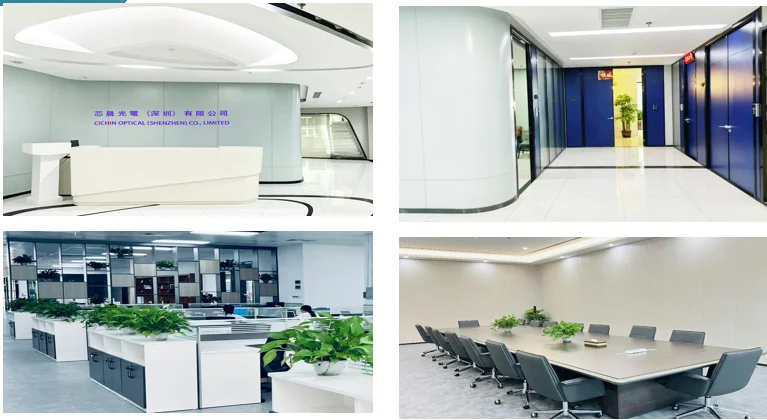
Factory

Universal Compatibility and Installation
This touch panel supports a wide range of operating systems and controller ICs, making it suitable for use in most embedded and portable applications. Installation is straightforward, either with peel-and-stick adhesive or by securing within a bezel or frame, ensuring flexibility for different device designs.
Superior Durability and Response
Engineered to withstand more than one million touches at a single point, the touch panel guarantees long-lasting performance even in demanding conditions. With a fast response time of 10ms and robust 3H surface hardness, it maintains reliability and accuracy with every use.
FAQs of 3.2 inch 4 wire resistive touch screen:
Q: How do I install the 3.2 inch 4-wire resistive touch screen panel?
A: The panel can be installed easily using peel-and-stick adhesive on the rear side or mounted via a bezel or frame depending on your devices requirements. Ensure the panel is securely aligned with your display during installation.Q: What devices or systems are compatible with this touch panel?
A: This touch screen panel is designed with universal operating system compatibility and supports most controller ICs, making it suitable for embedded systems, portable devices, handheld terminals, and automation interfaces.Q: When is it beneficial to use a resistive touch screen compared to capacitive alternatives?
A: Resistive touch screens like this one are ideal when gloved fingers or styluses are used, or in environments where dust and moderate moisture are present. Their high durability and precise analog input cater to applications requiring accuracy and resilience.Q: Where can I use this resistive touch screen panel?
A: You can use this panel in various equipment such as handheld terminals, automation devices, industrial embedded systems, and portable displays, especially where ruggedness and universal compatibility are crucial.Q: What is the expected lifespan of the touch panel, and how durable is it?
A: The touch screen is engineered to withstand over 1 million touches at a single point, providing a service period suitable for high-usage environments. Its front surface meets IP54 standards, offering resistance against dust and limited water splashes.Q: How does the touch panel process input, and what are the input options?
A: This 4-wire panel uses resistive touch technology to detect analog signals from input sources like styluses, gloved fingers, or ordinary touch pens, offering responsive and accurate touch data processing.Q: What are the main benefits of using this 3.2-inch resistive touch screen panel?
A: Key benefits include high durability, excellent compatibility, reliable operation in various conditions (temperature and humidity), and the flexibility of using different touch implements. Additionally, anti-glare/anti-fingerprint options and compliance with RoHS standards further enhance usability and safety.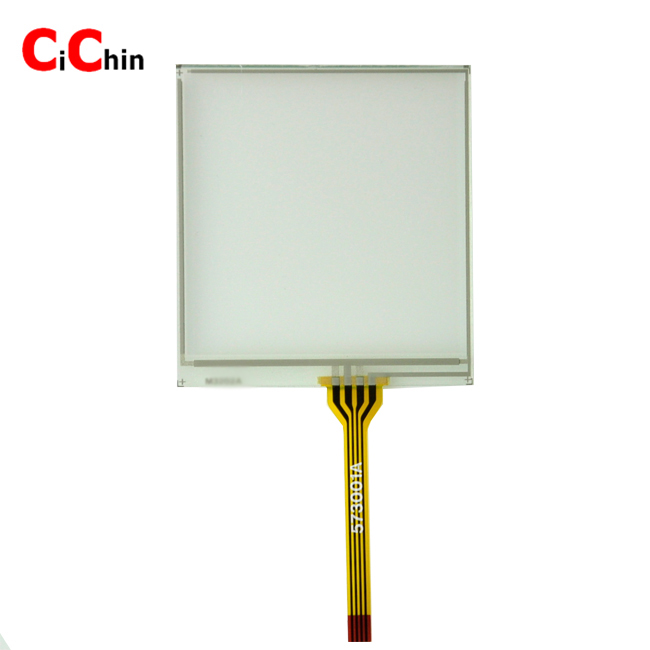

Price:
- 50
- 100
- 200
- 250
- 500
- 1000+
More Products in Resistive Touch Screen Category
19 Inch 5 Wire Resistive Flat Touch Screen Panel
Price 10.0 USD ($) / Piece
Minimum Order Quantity : 10 Pieces
Surface Treatment : Coated
Thickness : 2 To 4.5 Millimeter (mm)
Design : Modern
Color : Different Available
21.5 Inch 5 Wire Resistive Menbrane, 21.5 Inch 5 Wire Resistive Touch Film
Price 10.0 USD ($) / Piece
Minimum Order Quantity : 10 Pieces
Surface Treatment : Coated
Thickness : 2 To 4.5 Millimeter (mm)
Design : Modern
Color : Different Available


 Send Inquiry
Send Inquiry

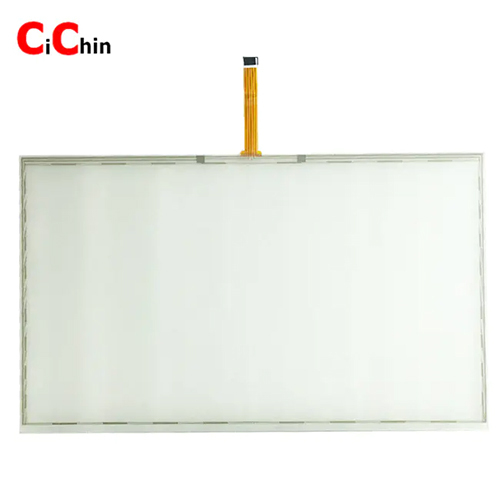
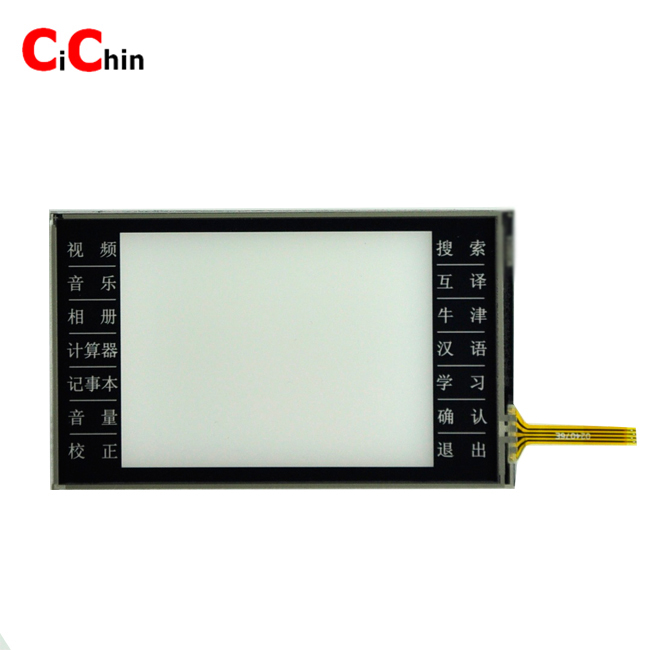
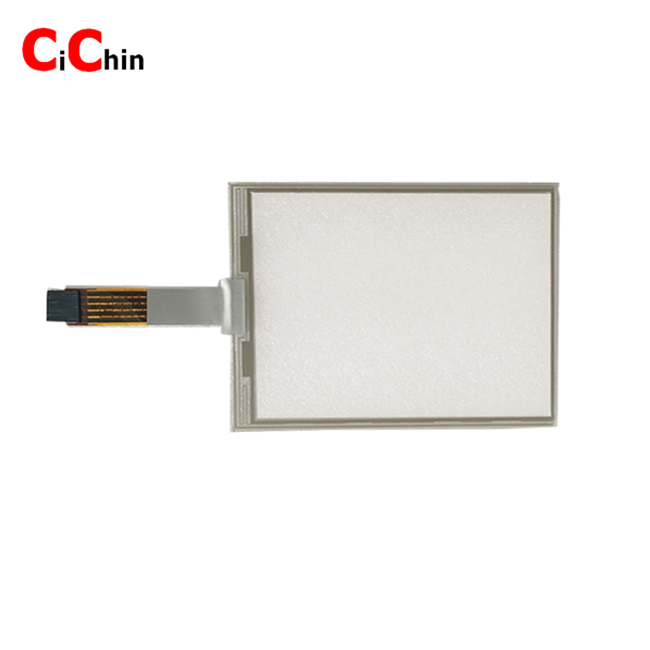
 Send Inquiry
Send Inquiry